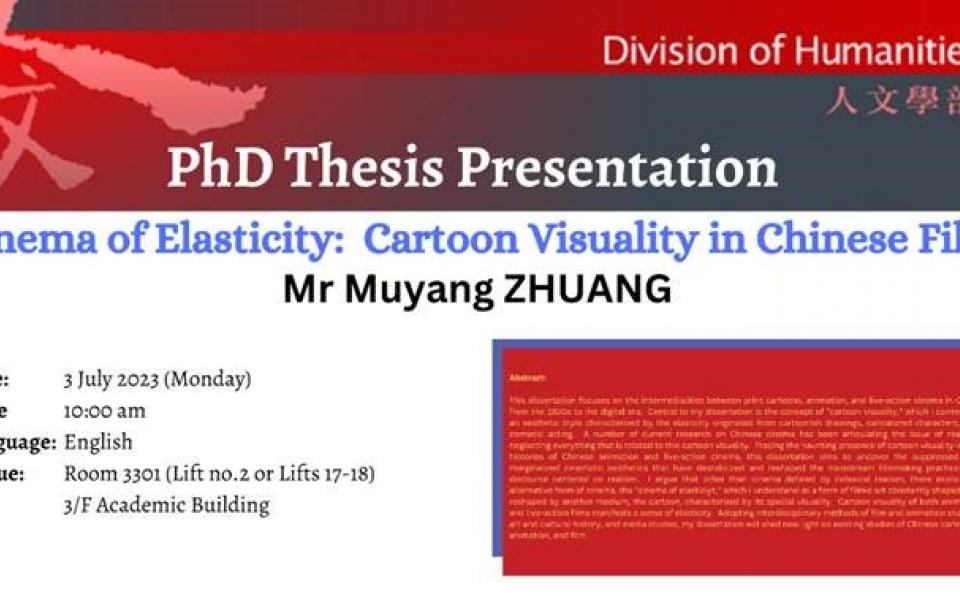ABSTRACT:
This dissertation focuses on the intermedialities between print cartoons, animation, and live-action cinema in China from the 1920s to the digital era. Central to my dissertation is the concept of “cartoon visuality,” which I contend is an aesthetic style characterized by the elasticity originated from cartoonish drawings, caricatured characters, and comedic acting. A number of current research on Chinese cinema has been articulating the issue of realism, neglecting everything that is related to this cartoon visuality. Tracing the haunting presence of cartoon visuality in the histories of Chinese animation and live-action cinema, this dissertation aims to uncover the suppressed and marginalized cinematic aesthetics that have destabilized and reshaped the mainstream filmmaking practice and discourse centered on realism. I argue that other than cinema defined by indexical realism, there exists an alternative form of cinema, the “cinema of elasticity,” which I understand as a form of filmic art constantly shaped and reshaped by another medium, the cartoon, characterized by its special visuality. Cartoon visuality of both animated and live-action films manifests a sense of elasticity. Adopting interdisciplinary methods of film and animation studies, art and cultural history, and media studies, my dissertation will shed new light on existing studies of Chinese cartoons, animation, and film.
